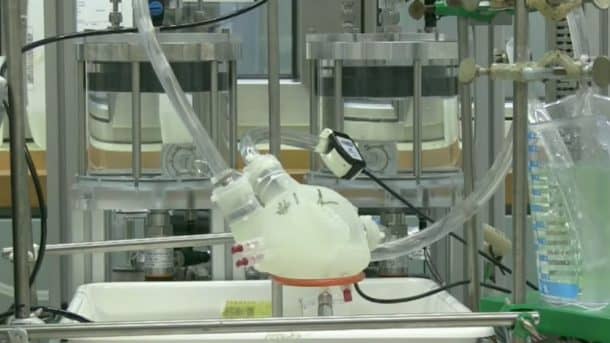Heart conditions cause the highest number of deaths around the globe, but medical technology has evolved so much that we are now capable of printing an artificial heart, make heart patches, robotic sleeves, or even a heart tissue out of a spinach leaf. There are many devices that have been developed to pump blood in replacement of a damaged heart that work well enough and a person can survive with a heart for a year
The devices available for the replacement of a real heart get the patients anchored to a bed and if not, they come with many other complications. As thousands of people spend years on the waiting list to receive a heart donation, artificial heart devices play a very significant role. There is a significant margin of improvement in the area, and the most recent one is a soft silicone heart that has been developed at ETH Zurich and beats like a real one while being safer than other options and more comfortable as well.

The artificial heart created by the ETH scientists mimics the function of the human heart very closely. The silicone heart was 3D printed using a lost-wax casting technique, and the size of the heart is the same as an actual heart with a weight of 390 grams (0.85 lb). The right and left ventricles of the artificial organ are separated by a chamber serving as muscle. Pressurized air inflates and deflates the heart to pump the fluid in and out.

The 3D printed heart was found to function in the same way as a human heart when tested with a fluid of the same viscosity as human blood. The biggest limitation with this heart is that it does not last for more than 3,000 beats, which accounts for the use of only 30 to 45 minutes. The team remains hopeful and says that it is just a proof of concept that will pave a way forward for more comfortable and safer artificial hearts. Nicholas Cohrs from the research team who is doctoral student commented, “This was simply a feasibility test. Our goal was not to present a heart ready for implantation, but to think about a new direction for the development of artificial hearts.”
The research done by the ETH team was published in the journal Artificial Organs.
Watch the silicone heart in being tested in the video below:

